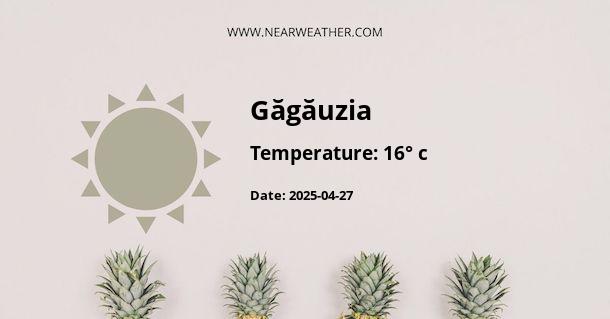Climate and Weather in Unitate Teritorială Autonomă Găgăuzia, Moldova
Unitate Teritorială Autonomă Găgăuzia is an autonomous territorial unit located in the southern part of Moldova. It has a unique climate and weather pattern influenced by its geographical location. In this article, we will explore the climate characteristics and weather conditions in Găgăuzia throughout the year.
Geographical Location
Găgăuzia is situated in the southern part of Moldova, bordered by Ukraine to the north and east, and the rest of Moldova to the west. It is located in the steppe zone, which has a significant impact on its climate.
Climate Classification
Găgăuzia has a transitional climate between the humid continental climate and the semi-arid climate. It experiences hot summers and cold winters, with moderate rainfall throughout the year. The climate can be described as temperate continental.
Temperature
The temperature in Găgăuzia varies greatly between seasons. Summers are generally hot, with average temperatures ranging from 25°C (77°F) to 30°C (86°F). The highest recorded temperature in Găgăuzia was 40°C (104°F). Winters, on the other hand, are cold, with average temperatures ranging from -5°C (23°F) to -10°C (14°F). The lowest recorded temperature in Găgăuzia was -29°C (-20°F).
Spring and autumn have mild temperatures, with average highs ranging from 15°C (59°F) to 20°C (68°F). However, it is important to note that temperatures can fluctuate significantly during these transitional seasons.
Precipitation
Găgăuzia receives moderate rainfall throughout the year, with an average annual precipitation of around 500-600mm (20-24 inches). The wettest months are June, July, and August, with an average of 60-80mm (2.4-3.2 inches) of rainfall per month. The driest months are January and February, with an average of 20-30mm (0.8-1.2 inches) of rainfall per month.
Snowfall is common during the winter months, with an average of 10-15 days of snow per month. The heaviest snowfall occurs in December and January.
Sunshine Hours
Găgăuzia enjoys a significant number of sunshine hours throughout the year. The region experiences an average of 2,000-2,200 hours of sunshine annually. The sunniest months are May, June, and July, with an average of 250-270 hours of sunshine per month. The least sunny months are December and January, with an average of 70-90 hours of sunshine per month.
Wind
The prevailing wind direction in Găgăuzia is from the northwest. The region experiences moderate wind speeds, with an average of 4-6 meters per second. Stronger wind gusts are more common during the transitional seasons of spring and autumn.
Climate Influences
The climate in Găgăuzia is influenced by several factors, including its geographical location, proximity to the Black Sea, and the surrounding topography. The steppe zone contributes to the semi-arid characteristics of the climate, while the proximity to the Black Sea brings some maritime influence, moderating temperatures and increasing humidity.
Conclusion
Unitate Teritorială Autonomă Găgăuzia experiences a unique climate characterized by hot summers, cold winters, and moderate rainfall throughout the year. The region's transitional climate between the humid continental climate and semi-arid climate creates a diverse weather pattern. Understanding the climate and weather in Găgăuzia is essential for residents and visitors to plan their activities and make necessary preparations.
A - Găgăuzia's Latitude is 46.166672 & Longitude is 28.666670.
A - Weather in Găgăuzia is 16° today.
A - Climate Conditions in Găgăuzia shows clear sky today.
A - Humidity in Găgăuzia is 26% today.
A - Wind speed in Găgăuzia is 16.34 km/h, flowing at 9° wind direction. today.
